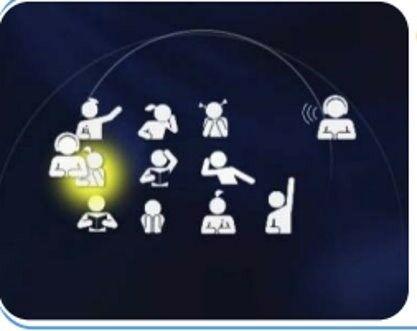Models of Co-Teaching
Quiz by Lisa McCarthy
Feel free to use or edit a copy
includes Teacher and Student dashboards
Measure skillsfrom any curriculum
Tag the questions with any skills you have. Your dashboard will track each student's mastery of each skill.
- edit the questions
- save a copy for later
- start a class game
- automatically assign follow-up activities based on students’ scores
- assign as homework
- share a link with colleagues
- print as a bubble sheet
- Q1
What model is this?
Teaming
Parallel
Station
One Teach, One Support
20s - Q2
What model is this?
One Teach, One Support
Station
Parallel
Alternative (Differentiated)
20s - Q3
What model is this?
Station
Parallel
Alternative (Differentiated)
Teaming
20s - Q4
What model is this?
Station
Alternative (Differentiated)
Teaming
Parallel
20s - Q5
What model is this?
Parallel
Teaming
One Teach, One Support
Station
20s - Q6
Both teachers are often in the front of the classroom, sharing the responsibilities of lead instruction, with equally active, but possibly different, roles in a lesson. This approach can enhance teacher creativity, encourage collaboration, and energize students. This strategy should be used occasionally as more subtle student needs can be missed when grouping is not being used. What model am I?
Parallel
Teaming
One Teach, One Support
Station
20s - Q7
One teacher manages a large group of students while the other takes a small group for a specific instructional purpose. This approach provides instructional flexibility and can be used for enrichment, remediation, assessment, or pre teaching, as well as for using alternative methods of providing lesson input. What model am I?
Teaming
Station
Alternative (Differentiated)
One Teach, One Support
20s - Q8
Co-teachers divide the class in half and instruct them on the same material; groups don't rotate. Parallel teaching allows the co-teachers to maximize participation and minimize behavior problems. This approach reduces the student-teacher ratio and increases instructional intensity. Co-teachers will need to be cognizant of timing and pacing when using this strategy. What model am I?
Station
Teaming
One Teach, One Support
Parallel
20s - Q9
Co-teachers divide their class into small groups to provide instruction. Activities should be designed to function independently of each other and require approximately the same amount of time with student groups rotating. This approach reduces the student-teacher ratio, increasing student participation and effective monitoring of the students. What model am I?
Alternative (Differentiated)
Parallel
Station
One Teach, One Support
20s - Q10
One teacher acts as the primary teacher while the other assists and supports the learners. The co-teacher assists by monitoring student work, addressing behavior issues, answering student questions, distributing materials, or asking the lead teacher to clarify any developing student misconceptions. Roles can switch depending on the topic or interests of the teacher, however this strategy is only meant to be used occasionally. What model am I?
Station
Teaming
One Teach, One Support
Parallel
20s
